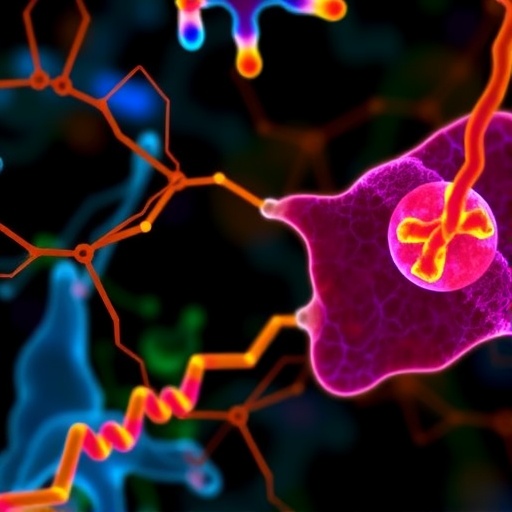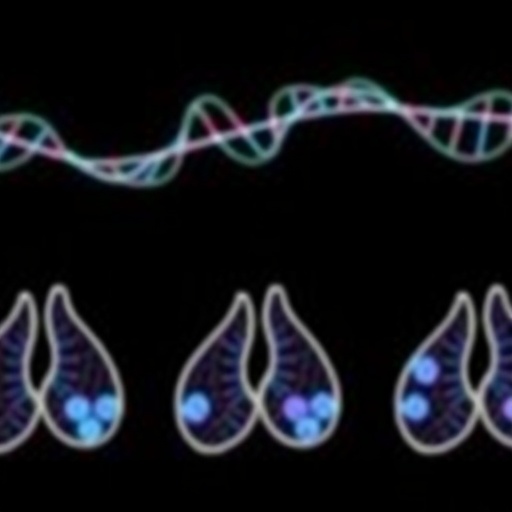Penn team identifies mechanisms behind tumor growth following circadian disturbances, shows cancer treatment may be more effective at specific times of day
PHILADELPHIA – While it’s reported that chronic disruptions of circadian rhythms, or internal body clocks, can lead to an increased risk of cancer, the underlying mechanisms by which the disturbances promote tumor growth had been largely unknown. In a study published today in the journal PLOS Biology, researchers at Penn Medicine show circadian disruptions trigger an increase in cell proliferation that, ultimately, shifts the cell-cycle balance and stimulates the growth of tumors in mice.
The findings also suggest that “chronotherapy”–the delivery of treatment timed to the host’s circadian rhythm–can improve disease outcomes of drugs that inhibit tumor growth in mice. Researchers found that one drug used for the treatment of breast cancer, Palbociclib, was more effective when taken in the morning than at night. Delivery of drug at a time of greater efficacy is expected to reduce the dose required, and thereby reduce side effects. However, chronic circadian disruption–which researchers achieved by simulating frequent jet-lag–reduced the efficacy of the therapy in human cultured cells, a finding that was validated in mice.
“We suggest that chronic disruption of the normal circadian rhythm tips the balance between tumor-suppressive and tumor-progressive gene expression to favor tumor growth,” said senior author Amita Sehgal, PhD, a professor of Neuroscience and director of Penn’s Chronobiology Program. “Better understanding the molecular effects of jet lag, shift work, and other sources of chronic disruption may lead to strategies to minimize the increased cancer risk associated with these behaviors, as well as to better treatment strategies, including timing delivery of cancer therapy for maximum benefit.”
To identify the cellular and molecular mechanisms driving this change, researchers used the hormone dexamethasone to chronically advance daily rhythms in human cultured cells, mimicking frequent jet-lag. They found the treatment altered expression of multiple genes, and increased expression of a cell-cycle control protein called cyclin D1. Cyclin D1, in turn, activated cyclin D-dependent kinase 4/6 (CDK4/6), proteins that are a part of a cell-cycle regulatory pathway. In this case, CDK4/6 halted the cell from growing larger and caused it to synthesize new DNA, which led to accelerated cell division rates.
“Our findings strongly indicate that environmental or physiological disturbances of circadian rhythms such as shift work, abnormal sleep timing, or irregular psycho-sociological stresses can affect variability in both cancer growth and response to cancer drugs,” said first author Yool Lee, a research associate in the Sehgal Lab. “Given this, it is reasonable to expect that resetting of the body clock by scheduled light-exposure, meal-times, or exercise, alongside a carefully timed chemotherapy regimen, would improve anti-tumor treatment. Taken together, our study identifies the mechanisms behind tumor growth following circadian disturbances, and highlights the importance of judicious application of cancer chronotherapy.”
###
This work was supported by the National Institutes of Health (R37-NS-048471) and Howard Hughes Medical Institute (HHMI). Additional Penn authors on the study include Nicholas F. Lahens, Shirley Zhang, Joseph Bedont and Jeffrey M. Field.
Penn Medicine is one of the world’s leading academic medical centers, dedicated to the related missions of medical education, biomedical research, and excellence in patient care. Penn Medicine consists of the Raymond and Ruth Perelman School of Medicine at the University of Pennsylvania (founded in 1765 as the nation’s first medical school) and the University of Pennsylvania Health System, which together form a $7.8 billion enterprise.
The Perelman School of Medicine has been ranked among the top medical schools in the United States for more than 20 years, according to U.S. News & World Report’s survey of research-oriented medical schools. The School is consistently among the nation’s top recipients of funding from the National Institutes of Health, with $425 million awarded in the 2018 fiscal year.
The University of Pennsylvania Health System’s patient care facilities include: the Hospital of the University of Pennsylvania and Penn Presbyterian Medical Center–which are recognized as one of the nation’s top “Honor Roll” hospitals by U.S. News & World Report–Chester County Hospital; Lancaster General Health; Penn Medicine Princeton Health; and Pennsylvania Hospital, the nation’s first hospital, founded in 1751. Additional facilities and enterprises include Good Shepherd Penn Partners, Penn Home Care and Hospice Services, Lancaster Behavioral Health Hospital, and Princeton House Behavioral Health, among others.
Penn Medicine is powered by a talented and dedicated workforce of more than 40,000 people. The organization also has alliances with top community health systems across both Southeastern Pennsylvania and Southern New Jersey, creating more options for patients no matter where they live.
Penn Medicine is committed to improving lives and health through a variety of community-based programs and activities. In fiscal year 2018, Penn Medicine provided more than $525 million to benefit our community.
Media Contact
Mike Iorfino
[email protected]
http://dx.




